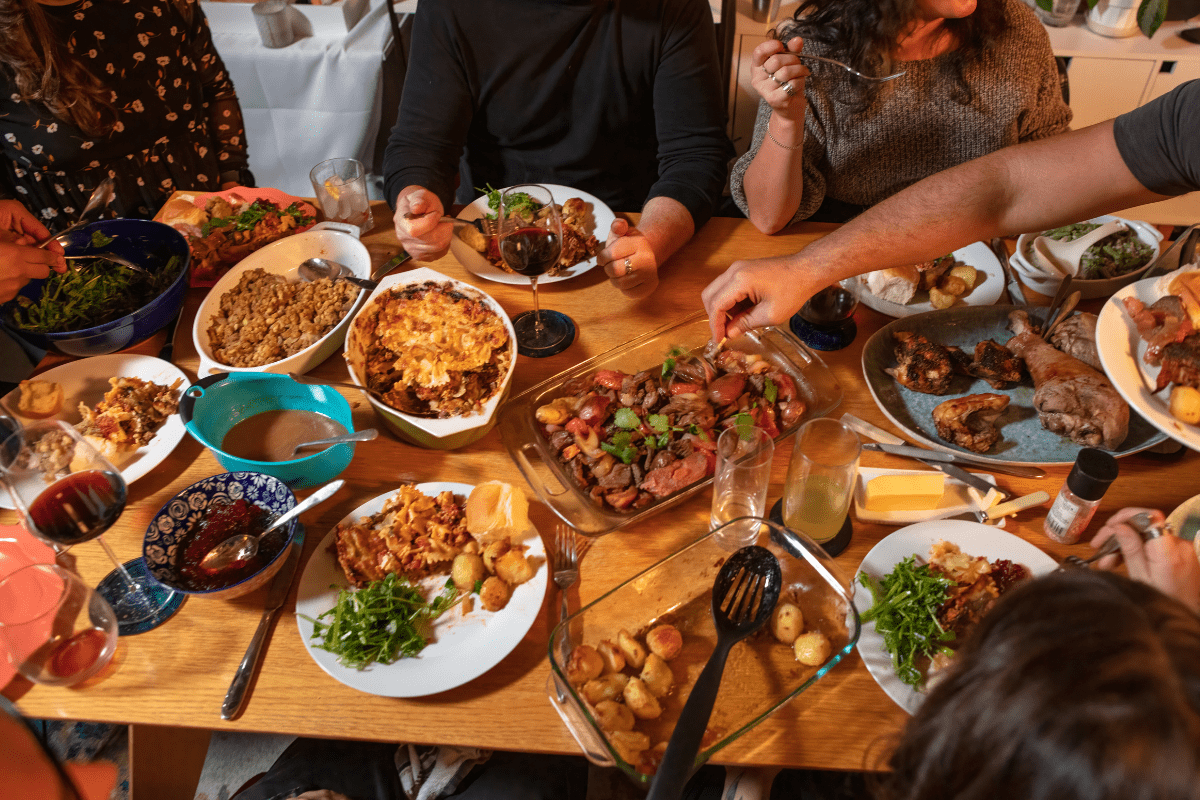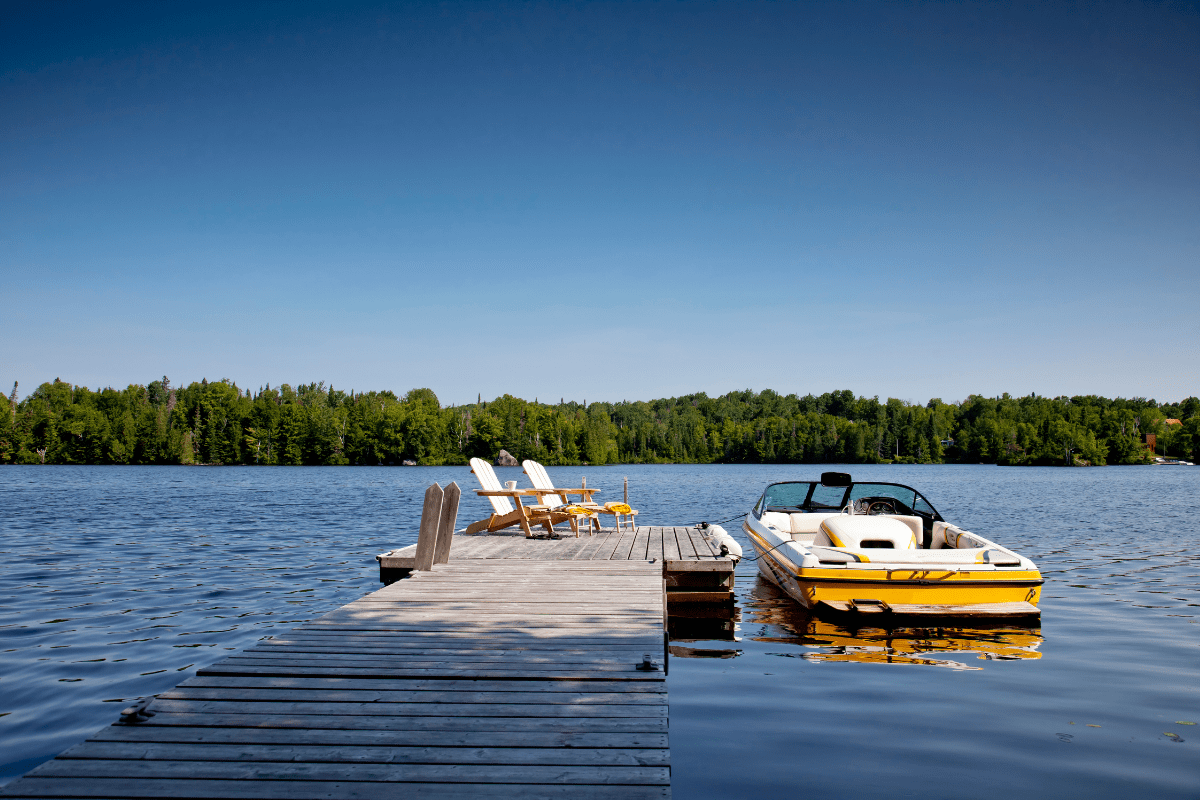Montana's food scene is basically what happens when cowboys, copper miners, and James Beard nominees walk into the same kitchen. The result? A cuisine that spans from 100-year-old pork chop sandwiches to contemporary Thai-bison fusion, all shaped by a state where your nearest neighbor might be 20 miles away and winter lasts approximately forever.
What makes Montana food actually Montana
Let's start with the ingredients that make Montana chefs either deeply grateful or slightly insane, depending on the season.
The purple gold rush (spoiler: it's huckleberries)
If Montana had a state religion, huckleberries would be its communion wafers. These wild berries absolutely refuse to be domesticated, which means every single one must be hand-picked from mountain forests between July and September. At current market prices, you're looking at $60-80 per gallon, making them literally worth their weight in… well, not quite gold, but definitely artisanal chocolate.
The Libby Cafe alone goes through 1,700 pounds annually just for their famous flapjacks. Unlike their cultivated blueberry cousins, wild huckleberries pack an intense flavor that locals describe as "summer in your mouth" or "what purple would taste like if purple was delicious."
Game meat: not just for mountain men anymore
Montana's protein game (pun intended) goes way beyond basic venison. We're talking:
- Elk chili with local beans
- Pronghorn antelope teriyaki
- Blue grouse with juniper berries
- Bison everything (seriously, everything)
Here's the thing about cooking wild game: it's lean. Like, bodybuilder-on-competition-day lean. Elk needs low and slow treatment. Venison demands added fat unless you enjoy chewing leather. And bison? Cook it past medium and you've basically committed a Montana felony.
From fields to breweries
Montana's agricultural scene produces some genuinely unique ingredients. The Golden Triangle region grows purple prairie barley that sounds like something from a fantasy novel but makes incredible bread. Flathead Valley cherries give Washington state a run for their money. And with Montana ranking third nationally in craft breweries per capita, those local grains often end up in your pint glass, sometimes accompanied by (you guessed it) huckleberries.
The foraging scene here makes Brooklyn hipsters look lazy. Locals harvest:
- Morels from fire-scarred forests
- Chokecherries from coulees
- Camas root from meadows
- Rose hips for winter tea
The dishes that built Montana
Some foods transcend mere sustenance to become cultural artifacts. In Montana, these dishes tell immigrant stories, mining history, and survival tales.
Butte's gift to handheld cuisine
When Butte was supplying 25% of the world's copper in the 1880s, miners needed portable lunches that could survive a journey into the earth's depths. Enter the Cornish pasty: a meat-and-vegetable pie with a crimped edge that served as an edible handle. Miners' wives would scratch initials into the crust so their husbands could identify their meals in the dark. The crimped edges, touched by dirty hands, were tossed aside as offerings to the mine spirits (or just because they were filthy).
Today, Butte cranks out thousands of these weekly. They're not quite the same as their Cornish ancestors – Montana versions tend to be bigger, beefier, and occasionally feature huckleberries because of course they do.
The sandwich that fed an empire
In 1924, Swedish immigrant John Burklund invented something beautiful at a little joint called Pork Chop John's: a hand-battered pork chop sandwich that would become Butte's other signature dish. The recipe hasn't changed since the copper mining days, probably because perfection doesn't need updating. It's simple, it's filling, and it's been feeding hungry Montanans for a century.
Indigenous innovation
Long before food trucks were trendy, Native Americans created the ultimate portable meal: pemmican. This concentrated superfood combined dried bison meat, rendered fat, and chokecherries into something that could sustain hunters for months. Think of it as the original energy bar, except actually nutritious and decidedly more intense.
The Salish and Kootenai tribes developed equally impressive techniques, like baking camas bulbs in ground pits for three days until they transformed into sweet, caramelized deliciousness. These weren't just survival foods; they were sophisticated preparations based on intimate knowledge of Montana's seasonal rhythms.
A century of culinary immigration
Montana's food story reads like an immigration manifest, with each wave adding new flavors to the mix.
When the world came to Butte
The mining boom turned Butte into one of America's most cosmopolitan cities. Workers arrived from:
- Cornwall (bringing those pasties)
- Ireland (contributing to the drinking culture)
- Finland (introducing cardamom bread)
- Italy (establishing supper clubs)
- Serbia (adding povitica nut bread)
- China (creating comfort food hybrids)
The Pekin Noodle Parlor, established in 1911, holds the title of America's oldest continuously operating Chinese restaurant. Their sweet-and-sour style might horrify food purists, but it's been comforting Butte residents through booms, busts, and hangovers for over a century.
Cowboys and chuck wagons
Ranch culture contributed its own culinary traditions through chuck wagon cooking. The chuck wagon cook, or "cookie," earned double a cowboy's wages and for good reason. He was chef, medic, and camp therapist rolled into one, creating Dutch oven miracles from limited ingredients while maintaining order among tired, hungry cowhands.
Modern Montana ranch cooking still follows these principles: simple preparations highlighting quality ingredients, preservation techniques for long winters, and portion sizes that assume you've been wrestling cattle all day.
The Basque connection
Basque sheepherders fleeing Franco's dictatorship brought their Dutch oven expertise to Montana's mountains. These solitary shepherds, tending flocks of 2,000 sheep, perfected the art of baking bread in ground pits and creating hearty stews that could simmer unattended while they worked.
Montana's contemporary food revolution
Something interesting happened when classically trained chefs started paying attention to Montana's ingredients. Turns out, when you combine world-class techniques with world-class raw materials, people notice.
The chefs putting Montana on the culinary map
Chef Dave Wells at Chico Hot Springs asks a simple question: "What does it taste like to live in Paradise Valley?" His answer involves foraging morels weekly, growing vegetables in a geothermally heated greenhouse, and creating 12-course tasting menus that capture Montana's terroir.
Jarrett Wrisley at Shan in Bozeman earned a 2024 James Beard nomination by applying Thai and Chinese techniques to Montana ingredients. "What could I cook here with fidelity, staying true to Asian cuisine?" he wondered. The answer: bison in authentic wok preparations and beef from specific local ranches transformed through Asian culinary traditions.
Brandon Cunningham at Social Haus became the first Montana chef to advance from James Beard semifinalist to finalist, serving what he calls "pretense-stripped" food. His eight-course tasting menus might feature a gourmet Big Mac alongside wood-fired local game, proving that sophistication doesn't require stuffiness.
Farm-to-table before it was trendy
Chef Melissa Harrison, a Top Chef contestant, founded Seasonal Montana in 2009 with a simple philosophy: "Working with local farmers and ranchers to procure the freshest ingredients creates unique meals that are a snapshot of time and place."
This isn't just marketing speak. Montana restaurants increasingly list specific sources on their menus. You're not ordering "local beef"; you're ordering "Wickens Ranch ribeye" or "Sabo Ranch pork." Montana State University even offers a Restaurant Management: Farm-to-Table degree program, because apparently this is serious business now.
Regional flavors across the Big Sky state
Montana's 147,000 square miles create distinct regional food cultures, each shaped by geography, climate, and the people who decided to stay despite both.
Eastern Montana: where wheat is king
The eastern plains produce simple, hearty fare influenced by Scandinavian farmers. This is comfort food country, where people still maintain the peculiar tradition of eating cinnamon rolls with chili. No, that's not a typo. Around Great Falls, this sweet-and-savory combination is as normal as ranch dressing on pizza (which, incidentally, is also normal here).
Western Montana: peak mountain cuisine
The mountainous west centers on the holy trinity of huckleberries, trout, and game meats. This region boasts the highest concentration of upscale restaurants, particularly in tourist destinations like Whitefish and Big Sky. The challenge? Distinguishing between authentic experiences and "howdy partner" tourist traps. Hint: if there's a mechanical bull, you've gone wrong.
Southwest Montana: the delicious melting pot
Thanks to its mining history, southwest Montana serves up the state's most diverse food scene. In Butte alone, you can breakfast on Cornish pasties, lunch on Serbian food, and dinner at a century-old Italian supper club. The city's unique position as a historical crossroads created a culinary landscape where authenticity comes not from isolation but from communities preserving their heritage across generations.
Central Montana: where the beef is
The agricultural heartland balances ranching traditions with contemporary innovation. With 92.8% of farms remaining family-owned, this region showcases Montana's agricultural bounty simply: perfectly grilled steaks, seasonal vegetables, and grains from nearby fields.
Finding the real Montana food experience
Forget the dude ranch "authentic Western dinners." The real Montana food scene lives in less photogenic but far more delicious places.
Brandings: the ultimate potluck
Cattle brandings represent peak Montana food culture. These aren't public events (mostly), but community gatherings where neighbors help neighbors in exchange for seriously substantial meals. The unwritten rules:
- Host provides the food
- Neighbors provide the labor
- Everyone provides the stories
- Quality matters more than presentation
The menu typically features Dutch oven dishes, massive quantities of beef, and sides designed to fuel hard physical work. It's Montana's version of a barn raising, except with more livestock and better food.
Working ranches and real cowboys
Want the genuine article? Places like Dryhead Ranch offer experiences where you actually work cattle, not just wear a cowboy hat for photos. The Montana Bunkhouses network connects visitors with 20+ working ranches where meals happen alongside real ranch hands, not actors in Stetsons.
The local joints locals love
The Bank Bar & Vault Restaurant in Wilsall exemplifies authentic Montana dining: a 4.6-star hole-in-the-wall where ranchers drive 45 minutes for grass-fed beef raised two miles away. The Western Café in Bozeman has been cutting chicken-fried steak fresh from beef slabs multiple times daily since 1906. These places don't need to advertise their authenticity; their parking lots full of muddy pickups do it for them.
The future is delicious
Montana's culinary scene keeps evolving while maintaining its roots. Food festivals celebrate everything from Butte's ethnic heritage to Flathead Valley's cherries. Young chefs blend unexpected cuisines with traditional ingredients. Home cooks maintain traditions like game processing, huckleberry preservation, and Dutch oven mastery.
The state's food future looks increasingly sophisticated without abandoning what makes it unique. As Brandon Cunningham notes, the pride comes from "bringing more culinary awareness to the state of Montana" – not changing it into something else, but revealing what's always been here.
Montana's culinary soul remains practical, generous, and deeply connected to the land. It lives in brandings where communities gather, small-town cafes where everybody knows your order, and home kitchens where families turn summer's bounty into winter's sustenance. It's in the $60-per-gallon huckleberries and the $10 pork chop sandwiches, the James Beard nominations and the church basement potlucks.
This is Montana food: born from necessity, refined by diversity, and served with a side of spectacular scenery. Just remember to save room for huckleberry pie. Trust me on this one.





